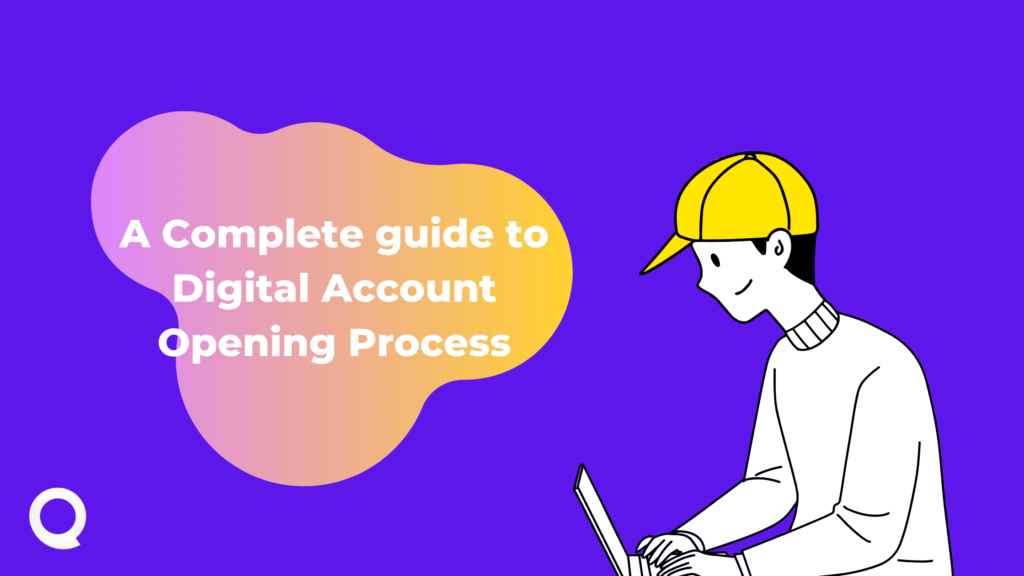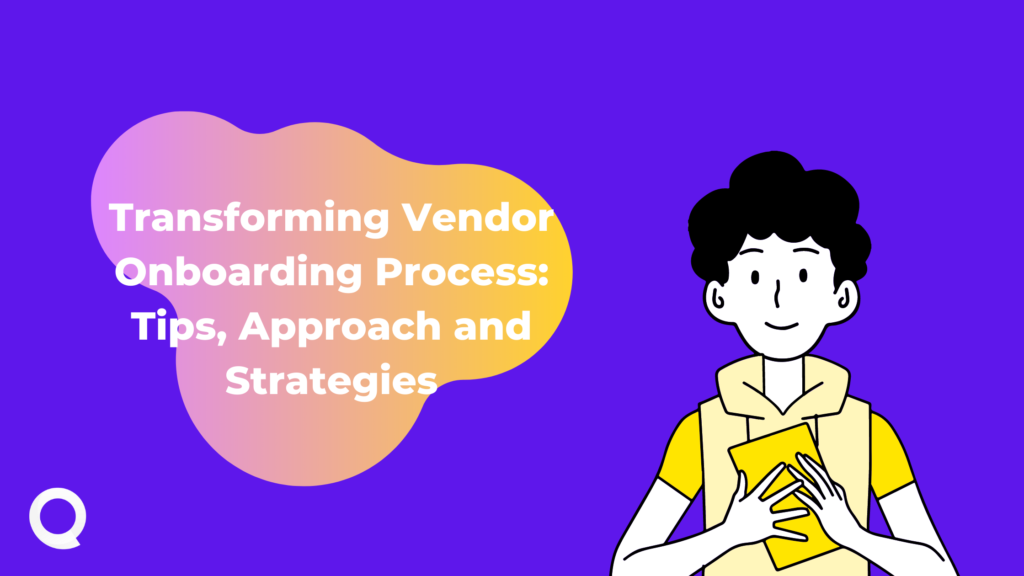Introduction

In today’s interconnected business ecosystem, vendor risk management is paramount. It involves identifying, assessing, and mitigating the risks associated with third-party vendors that supply goods, services, and operational support. Vendor risk can manifest in various forms, including financial instability, cyber security threats, and compliance issues, which can have significant impacts on an organization’s operational efficiency and reputation.
Emphasizing the importance of a thorough vendor risk assessment process, businesses are increasingly turning to advanced tools and technologies, such as automated vendor risk assessment and AI, to streamline and enhance the accuracy of their evaluations. This blog delves into the essential strategies and innovations shaping effective vendor risk management, ensuring organizations can maintain robust, secure, and compliant vendor relationships in the digital age.
What is Vendor Risk?
Vendor risk refers to the potential negative impact that arises from a company’s reliance on external suppliers and service providers. This risk can manifest in various ways, from financial instability of the vendor leading to supply chain disruptions, to data breaches in the vendor’s systems compromising sensitive information. For instance, if a critical supplier fails to deliver a key component due to financial difficulties or operational challenges, the hiring company could face production delays, increased costs, and potential revenue loss. Another example is when a data processing vendor experiences a cybersecurity incident, risking the confidentiality and integrity of the hiring company’s data.
Understanding the Impact on Businesses

The repercussions of vendor risks on businesses can be far-reaching. Financially, companies may incur direct costs from interruptions in service or supply, legal penalties due to the vendor’s non-compliance with regulations, or indirect costs from damage to reputation and customer trust.
Operational impacts might include delays in project timelines, reduced product quality, or the need for rapid and costly adjustments to sourcing strategies. From a strategic standpoint, significant vendor issues can divert management focus, resources from core activities, and potentially hinder a company’s ability to compete effectively in the market.
Recognizing and mitigating vendor risk is not merely about averting potential negatives; it’s also a strategic activity that supports business continuity, protects brand reputation, and ensures compliance across the supply chain. Companies that effectively manage vendor risks can achieve greater agility, resilience, and competitive advantage, turning potential vulnerabilities into strengths.
Types of Vendor Risk & Assessment
Navigating the complex landscape of vendor risk requires a deep understanding of its various types and the methodologies used for assessment. Businesses today face a multitude of risks stemming from their reliance on external vendors, making it imperative to adopt a comprehensive approach to identify, evaluate, and mitigate these risks effectively.
Financial Risks
Financial risk assessment involves evaluating a vendor’s financial health and stability to ensure they can fulfill their contractual obligations over the term of the agreement. This evaluation might include analyzing the vendor’s credit ratings, financial statements, and other indicators of financial performance. The aim is to prevent potential supply chain disruptions or financial losses that could arise from a vendor’s financial insolvency.
Operational Risks
Operational risks are concerned with the efficiency and reliability of a vendor’s internal processes and their ability to deliver products or services in line with agreed-upon standards and timelines. Assessment methods include reviewing the vendor’s operational history, capacity, quality control mechanisms, and contingency plans for dealing with unexpected disruptions.
Compliance and Regulatory Risks
This type of risk involves ensuring that the vendor complies with all relevant laws, regulations, and industry standards, including data protection laws, labor laws, and environmental regulations. Compliance risk assessment can involve audits, certifications, and regular reviews of the vendor’s compliance status to mitigate legal and reputational risks.
Cyber security and Data Privacy Risks
With the increasing prevalence of digital transactions and data exchanges, assessing a vendor’s cybersecurity posture and data privacy practices has become crucial. This involves evaluating the vendor’s information security policies, data handling procedures, incident response plans, and compliance with data protection regulations. Tools such as cybersecurity assessments, third-party audits, and penetration testing are commonly used to gauge the robustness of a vendor’s cybersecurity defenses.
Supply Chain and Logistical Risks
These risks pertain to potential disruptions in the supply chain, including delays, quality issues, or failures in the logistical operations of a vendor. Assessing these risks requires a thorough understanding of the vendor’s supply chain management practices, including their sourcing strategies, inventory management, and transportation arrangements. Scenario planning and supply chain mapping are key tools in identifying and mitigating these risks.
How to Determine the Risk of a Vendor
Determining the risk of a vendor is a critical step in the vendor management process, encompassing a thorough evaluation of potential vendors to identify and mitigate risks. This process involves several key steps and considerations that ensure organizations can maintain robust and secure supply chains.
Criteria for Evaluating Vendor Risk
The evaluation of vendor risk should be comprehensive, considering various factors that could impact the business relationship. These criteria include:
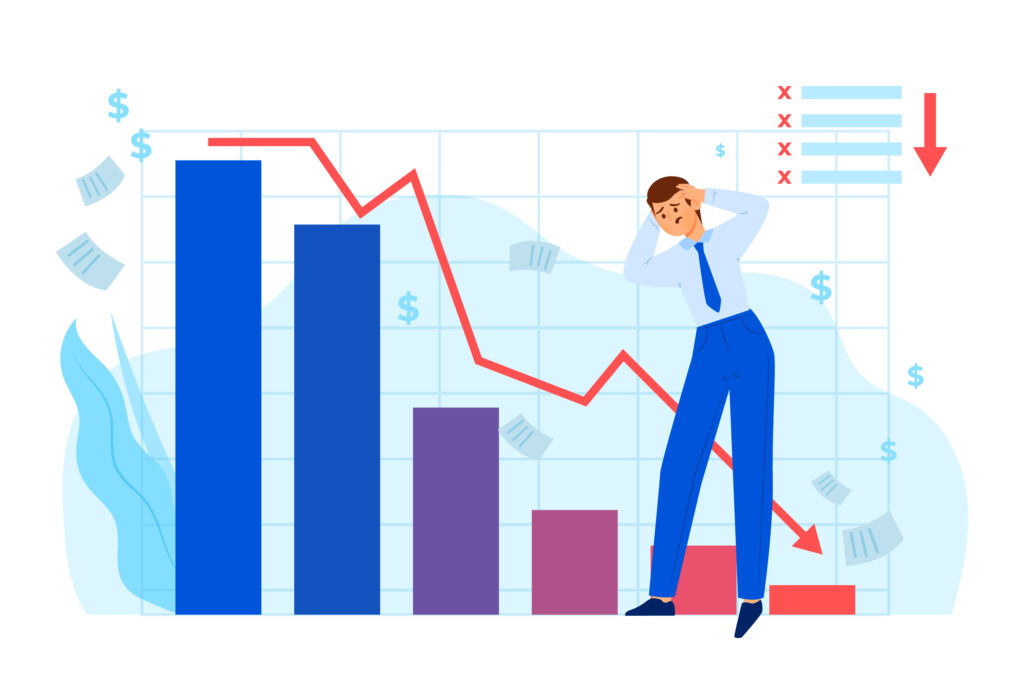
- Financial Stability: Analyzing financial documents and reports to assess the vendor’s economic health and longevity.
- Operational Capacity: Evaluating the vendor’s ability to meet contractual obligations, including delivery timelines, product quality, and service levels.
- Compliance and Legal Considerations: Ensuring the vendor adheres to industry regulations, legal requirements, and ethical standards.
- Cybersecurity Measures: Assessing the vendor’s cybersecurity protocols, data protection measures, and response strategies for potential data breaches.
- Reputation and Reliability: Researching the vendor’s market reputation, customer feedback, and history of reliability in fulfilling engagements.
Conducting Thorough Due Diligence
Due diligence is the investigative process undertaken by businesses to thoroughly understand their vendors’ operations and risk profiles. This process includes:

- Document Review: Collecting and examining all relevant documentation, including contracts, financial records, compliance certificates, and security policies.
- Interviews and Site Visits: Engaging with the vendor’s management, visiting facilities, and conducting interviews to gain insights into operational practices and capabilities.
- Risk Assessments: Utilizing tools and frameworks to systematically identify and analyze risks associated with the vendor’s services or products.
- Reference Checks: Contacting previous or current clients of the vendor to gather feedback on their performance and reliability.
Leveraging Technology in Risk Determination
Advancements in technology have significantly enhanced the efficiency and effectiveness of vendor risk assessments. Automated tools and platforms can streamline data collection, analysis, and monitoring, providing real-time insights into vendor risk profiles. Artificial intelligence (AI) and machine learning algorithms can predict potential risk factors by analyzing vast amounts of data, identifying patterns, and suggesting mitigation strategies.
Continuous Monitoring and Review
Vendor risk determination is not a one-time activity but a continuous process that requires regular monitoring and review. Changes in the vendor’s operations, financial status, or the external business environment can alter the risk landscape, necessitating ongoing vigilance. Effective vendor risk management programs incorporate mechanisms for periodic reassessment, enabling organizations to respond proactively to emerging risks.
In conclusion, determining the risk of a vendor involves a multifaceted approach that assesses various risk factors and utilizes both traditional methods and modern technologies. By conducting thorough due diligence and leveraging automated tools for continuous monitoring, businesses can effectively manage vendor risks, ensuring the stability and security of their supply chains.
Effective Vendor Risk Assessment: Tools and Techniques
In an era where vendor relationships are increasingly complex and integral to business operations, the need for sophisticated, accurate, and efficient vendor risk assessment tools and techniques has never been greater. These methodologies are designed to evaluate potential risks associated with vendors comprehensively, enabling businesses to make informed decisions and implement effective risk management strategies.
Traditional Assessment Tools
Traditionally, businesses have relied on a combination of manual processes and basic software solutions to assess vendor risk. These tools often include:
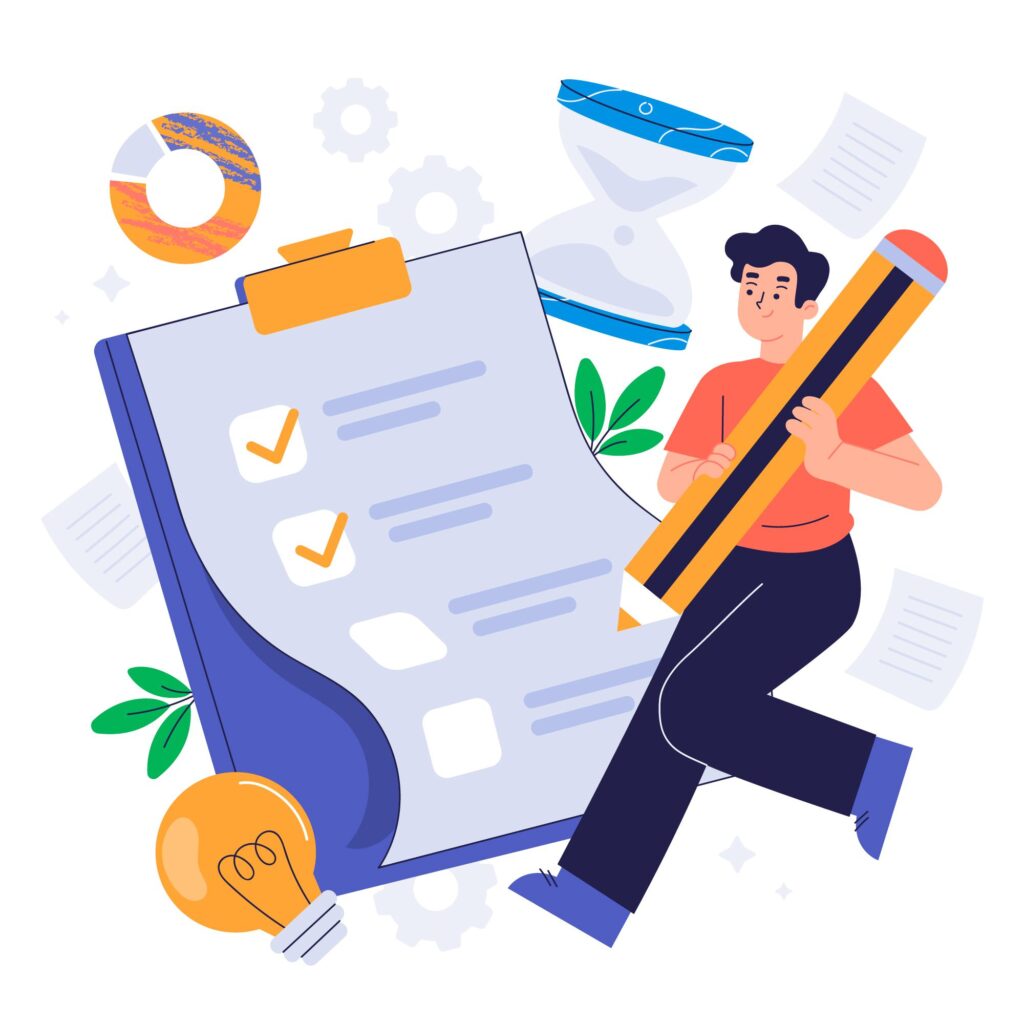
- Checklists and Questionnaires: Structured forms designed to gather essential information about the vendor’s operations, security practices, compliance status, and financial health.
- Spreadsheets: Used for organizing and analyzing data collected from vendors, although they can be time-consuming and prone to human error.
- Audits and Site Visits: Conducting physical inspections of vendor facilities to verify information provided and assess operational practices firsthand.
While these traditional tools have been foundational in vendor risk assessment, they often lack the scalability, efficiency, and depth required to manage the complexity of modern vendor ecosystems.
Automated Tools for Risk Assessment
To address the limitations of traditional methodologies, many organizations are turning to automated tools for vendor risk assessment. These platforms offer several advantages:
- Scalability: Capable of handling a large volume of assessments simultaneously, making them ideal for businesses with extensive vendor networks.
- Efficiency: Automated tools significantly reduce the time and resources required to conduct comprehensive assessments.
- Consistency: Standardizing the assessment process ensures that all vendors are evaluated against the same criteria, improving the reliability of the results.
- Real-Time Monitoring: Some platforms offer continuous monitoring capabilities, alerting businesses to potential risks as they arise.
AI and Machine Learning in Risk Assessment
The integration of AI and machine learning technologies into vendor risk assessment tools represents a significant advancement in the field. These technologies can:

- Predictive Analytics: Analyze historical data to predict potential future risks, allowing businesses to proactively address vulnerabilities.
- Natural Language Processing (NLP): Automate the extraction of relevant information from unstructured data sources, such as vendor contracts and compliance documents.
- Anomaly Detection: Identify patterns or activities that deviate from the norm, which may indicate potential risks.
Choosing the Right Tools
Selecting the appropriate tools for vendor risk assessment depends on several factors, including the size and complexity of the vendor ecosystem, the specific risks associated with the industry, and the organization’s resources. Many businesses opt for a hybrid approach, combining the depth and insight of traditional methods with the efficiency and scalability of automated solutions.
In conclusion, the evolution of vendor risk assessment tools and techniques from manual processes to sophisticated AI-driven platforms reflects the growing complexity and importance of vendor management. By leveraging these advanced methodologies, organizations can enhance their risk assessment capabilities, improve decision-making, and maintain resilient, secure vendor relationships.
Automated Vendor Risk Assessment and Onboarding
The advent of automated solutions in the domain of vendor risk assessment and onboarding marks a pivotal shift towards more dynamic, efficient, and accurate processes. These technological innovations not only streamline the assessment and onboarding phases but also enhance the depth and reliability of the evaluations conducted.
The Rise of Automation in Vendor Assessment
Automation in vendor risk assessment introduces a suite of tools that systematically evaluate potential risks associated with new and existing vendors. These tools leverage databases, algorithms, and predefined criteria to analyze a vendor’s financial health, compliance status, operational stability, and cybersecurity posture. The benefits of such automation include:
- Speed and Efficiency: Reducing the time from initial contact to full vendor onboarding, enabling quicker integration into supply chains or operational frameworks.
- Consistency: Ensuring that every assessment follows the same criteria and methodology, thereby eliminating human bias and enhancing fairness in vendor selection.
- Scalability: Allowing companies to assess a larger number of vendors simultaneously without a proportional increase in resource allocation.
Automated Onboarding Processes
The onboarding of new vendors, a process traditionally fraught with paperwork and manual verification, can now be significantly accelerated and improved with automation. Automated onboarding systems guide vendors through each step of the process, from initial data submission to the final integration into the company’s operational systems. Key features include:
- Self-Service Portals: Vendors can enter their information, upload necessary documents, and track their onboarding status in real time.
- Integration Capabilities: Automated systems can integrate with internal procurement, finance, and IT systems, facilitating seamless data exchange and operational synergy.
- Compliance Checks: Automated checks ensure that vendors meet all regulatory and compliance requirements before final approval.
The Role of Digital Solutions in Risk Management
Digital solutions extend beyond the assessment and onboarding stages, offering ongoing monitoring and management capabilities that ensure vendors continue to meet the required standards. These solutions can alert companies to changes in a vendor’s risk profile, such as financial instability or cybersecurity incidents, enabling proactive mitigation measures.
The Impact of AI and Advanced Analytics
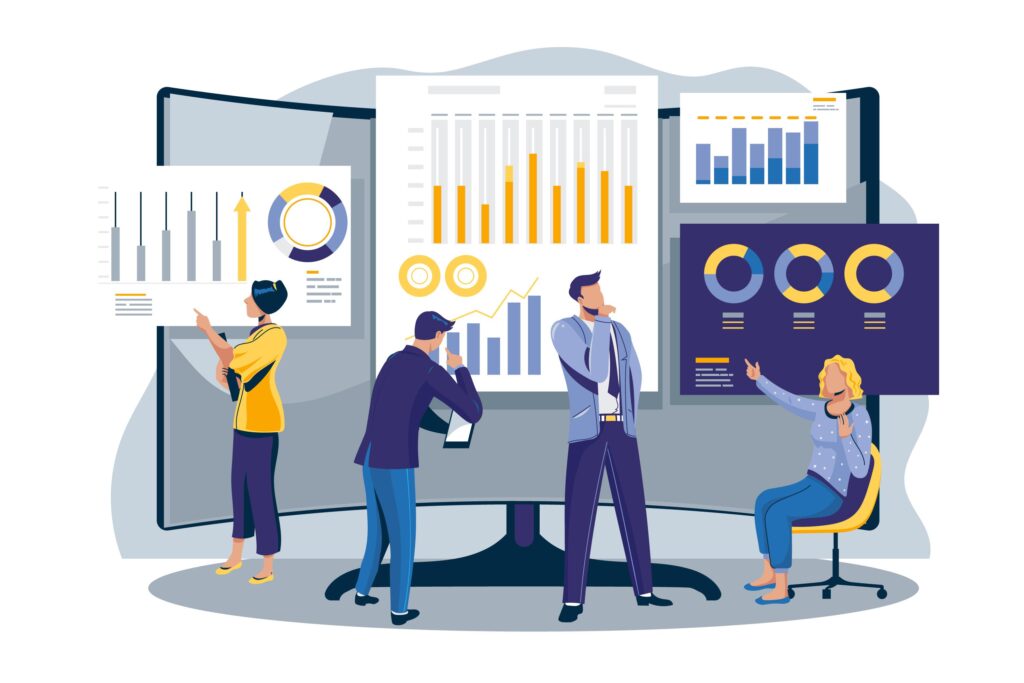
The integration of AI and advanced analytics into automated vendor risk assessment tools represents a frontier in risk management technology. AI algorithms can predict future risk trends based on historical data, identify patterns that may indicate emerging risks, and recommend tailored mitigation strategies.
These capabilities transform vendor risk management from a reactive to a proactive discipline, significantly enhancing an organization’s resilience and operational integrity.
In conclusion, automated vendor risk assessment and onboarding are transforming the landscape of vendor management. By leveraging these technologies, organizations can achieve greater efficiency, accuracy, and strategic insight into their vendor relationships. As these solutions continue to evolve, they promise to further enhance the capabilities of businesses to manage and mitigate vendor risks effectively.
Managing and Eradicating Vendor Risks
Effective management and eradication of vendor risks are paramount to maintaining operational integrity, safeguarding financial stability, and upholding the reputation of businesses. This complex process requires a strategic, informed approach to identify, assess, and mitigate risks throughout the lifecycle of vendor relationships.
Strategies for Risk Mitigation
The first step in managing vendor risk involves developing comprehensive mitigation strategies tailored to the specific types of risk identified during the assessment phase. These strategies often include:
- Diversification of Vendor Base: Avoiding over-reliance on a single vendor for critical services or products to minimize the impact of potential disruptions.
- Establishing Clear Contractual Agreements: Defining the expectations, responsibilities, and penalties related to risk management within the contract to ensure vendors are accountable for maintaining agreed-upon standards.
- Implementing Robust Security Measures: Requiring vendors to adhere to stringent cybersecurity protocols to protect sensitive data and systems from breaches.
Regular Monitoring and Review Processes
Ongoing monitoring of vendor performance and risk profile is essential for the timely detection of potential issues that could affect business operations. This involves:
- Continuous Performance Evaluation: Tracking vendor performance against key metrics and service level agreements (SLAs) to ensure compliance with contractual obligations.
- Regular Risk Assessments: Conducting periodic reassessments of vendor risks to identify new threats and vulnerabilities as the business environment and vendor operations evolve.
- Effective Communication Channels: Establishing open lines of communication with vendors to facilitate the quick resolution of issues and adjustments to changing circumstances.
Vendor Risk Management Frameworks
Adopting a structured vendor risk management framework enables organizations to systematically manage vendor risks. Key components of an effective framework include:
- Governance Structure: Defining roles and responsibilities within the organization for overseeing vendor risk management processes.
- Risk Identification and Classification: Categorizing risks based on their potential impact and likelihood to prioritize management efforts.
- Mitigation and Response Plans: Developing specific action plans for reducing risk exposure and responding to incidents involving vendor-related risks.
- Compliance and Reporting: Ensuring adherence to regulatory requirements and internal policies, and reporting on vendor risk management activities to stakeholders.
Leveraging Technology for Enhanced Risk Management
The use of technology plays a crucial role in streamlining and enhancing the vendor risk management process. Advanced software solutions and platforms offer features such as:
- Automated Risk Monitoring: Utilizing AI and machine learning algorithms to continuously monitor vendor activities and flag potential risks.
- Data Analytics: Analyzing large volumes of data to uncover insights and trends that can inform risk management strategies.
- Integrated Vendor Management Systems: Consolidating vendor information, risk assessments, and monitoring activities into a single platform for ease of management.
In conclusion, managing and eradicating vendor risks is an ongoing process that requires a strategic, comprehensive approach. By implementing effective mitigation strategies, establishing regular monitoring and review processes, and leveraging technology, organizations can significantly reduce the vulnerabilities associated with vendor relationships and enhance their overall risk posture.
Documenting & Assessing Vendor Risk
The documentation and assessment of vendor risk are critical components of a robust vendor risk management program. These processes ensure that all potential risks are identified, analyzed, documented, and addressed in a manner that aligns with the organization’s risk tolerance and compliance requirements.
Best Practices in Documentation
Effective documentation practices serve as the foundation for a transparent and accountable vendor risk management program. Essential documentation practices include:
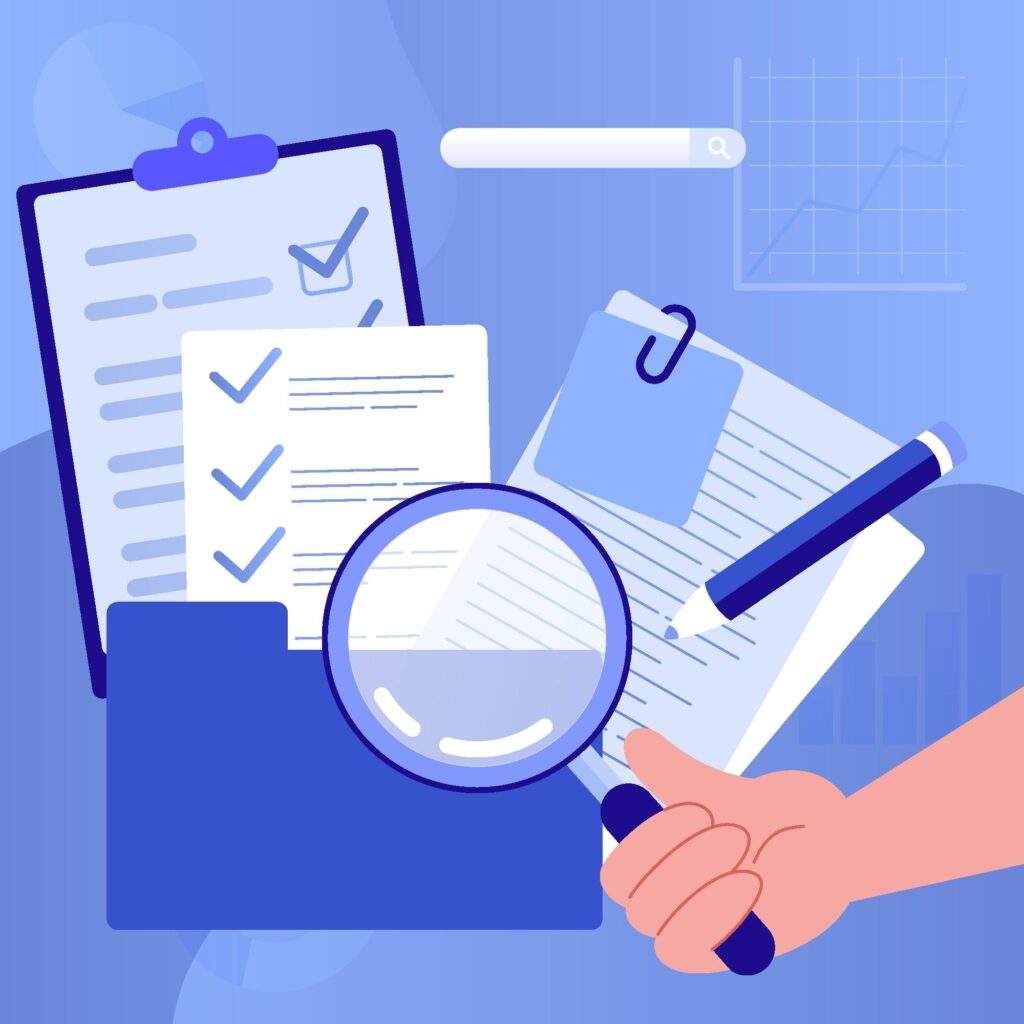
- Risk Assessment Reports: Detailed reports that outline the findings from the risk assessment process, including the methodology used, risks identified, and recommendations for mitigation.
- Vendor Contracts and Agreements: Contracts should clearly delineate the responsibilities related to risk management, compliance requirements, and the consequences of non-compliance.
- Audit Trails and Monitoring Records: Maintaining records of all monitoring activities, audits, and compliance checks performed on vendors to track performance over time and support due diligence efforts.
- Incident Response and Recovery Plans: Documentation of plans and procedures for responding to and recovering from vendor-related incidents, ensuring business continuity.
Assessing and Updating Risk Profiles
The dynamic nature of both the business environment and vendor operations necessitates regular reassessment and updating of vendor risk profiles. This iterative process involves:
- Periodic Re-evaluations: Conducting scheduled reassessments of vendor risks based on changes in the vendor’s operations, the business relationship, or the external environment.
- Impact Analysis: Evaluating the potential impact of identified risks on the organization’s operations and objectives, considering both the likelihood and severity of risk events.
- Mitigation Strategy Adjustments: Updating risk mitigation strategies and action plans based on the outcomes of reassessments to address new or evolving risks effectively.
Leveraging Technology for Efficient Documentation and Assessment
Advancements in technology have significantly improved the efficiency and effectiveness of documenting and assessing vendor risk. Key technological tools include:
- Vendor Risk Management Platforms: Integrated solutions that facilitate the centralized management of vendor risk documentation, assessments, and monitoring activities.
- Collaboration Tools: Platforms that enable seamless communication and information sharing between the organization and its vendors, supporting transparency and collaboration in risk management efforts.
- Data Analytics and Visualization Tools: Tools that analyze risk-related data and present it in an easily understandable format, aiding in the decision-making process and highlighting areas requiring attention.
In conclusion, the meticulous documentation and ongoing assessment of vendor risk are indispensable for maintaining a comprehensive understanding of the risk landscape associated with third-party relationships. By adopting best practices in documentation, regularly updating risk profiles, and leveraging modern technological solutions, organizations can enhance their risk management processes, ensuring resilience and compliance in an ever-changing business environment.
The Role of AI in Vendor Risk Assessment
The integration of AI into vendor risk assessment processes marks a significant evolution in how organizations approach the identification and management of vendor-related risks. By harnessing the power of AI, companies can achieve greater accuracy, efficiency, and foresight in their risk management strategies.
Enhancing Efficiency and Accuracy
AI-driven tools are capable of processing vast amounts of data at speeds unattainable by human analysts. This capability allows for the rapid assessment of vendor risk profiles, including financial stability, cybersecurity posture, and compliance with regulatory requirements. AI algorithms can analyze historical data, vendor responses to questionnaires, and external information sources to identify risk indicators with high precision.
- Automated Data Analysis: AI algorithms sift through extensive datasets to detect patterns, anomalies, and correlations that might indicate risk, reducing the likelihood of human error and oversight.
- Natural Language Processing (NLP): AI can interpret and analyze textual information from contracts, regulatory filings, and other documents, extracting relevant insights for risk assessment.
Predictive Risk Modeling
One of the most transformative aspects of AI in vendor risk assessment is its ability to predict future risks based on historical data and trends. Predictive analytics enables organizations to anticipate potential issues before they materialize, allowing for proactive risk mitigation.
- Trend Analysis: AI models can identify trends in vendor behavior or market conditions that may signal future risk, enabling companies to adjust their strategies accordingly.
- Risk Scoring: Vendors can be assigned risk scores based on AI analysis, helping organizations prioritize their monitoring and mitigation efforts on those with higher risk profiles.
Continuous Monitoring and Real-Time Alerts
AI technologies facilitate the continuous monitoring of vendor activities and performance, providing real-time alerts when risk indicators are detected. This capability ensures that companies can respond swiftly to emerging risks, minimizing potential impacts on their operations.
- Dynamic Risk Assessments: Unlike traditional assessment methods that offer a snapshot in time, AI-driven assessments continuously update vendor risk profiles based on new data and incidents.
- Anomaly Detection: AI systems are adept at identifying deviations from normal patterns of behavior, flagging potential issues for immediate investigation.
Challenges and Considerations
While AI offers substantial benefits in vendor risk assessment, organizations must also navigate challenges related to data quality, algorithmic bias, and the interpretability of AI models. Ensuring the accuracy and fairness of AI assessments requires ongoing oversight, validation of AI outputs, and transparency in the algorithms used.
In conclusion, the role of AI in vendor risk assessment represents a significant leap forward in the field of risk management. By enhancing the efficiency, accuracy, and predictive capabilities of assessments, AI empowers organizations to manage vendor risks more effectively, ensuring the resilience and integrity of their supply chains and business operations.
Why Determining Vendor Risk is Important?
In an increasingly interconnected and outsourced business environment, the significance of comprehensively understanding and managing vendor risk cannot be overstressed. Determining vendor risk plays a pivotal role in safeguarding a company’s operational continuity, protecting its financial health, and maintaining its reputation among customers and stakeholders.
Impact on Business Continuity
Vendor disruptions can lead to significant operational setbacks. Whether it’s a delay in the supply chain, a breach in data security, or a failure in service provision, the ripple effects can compromise a business’s ability to function effectively. By accurately determining vendor risk, organizations can implement contingency plans, ensuring minimal disruption to their operations.
- Preventive Measures: Identifying potential risks early allows businesses to take preventive measures, such as diversifying their vendor base or establishing robust backup systems.
- Strategic Planning: Understanding the risk landscape aids in strategic planning, enabling companies to align their vendor selection and management practices with their long-term objectives.
Financial Implications
The financial implications of vendor risks are profound. From direct costs associated with rectifying issues and compensating affected parties to indirect costs stemming from lost sales, productivity, and damage to brand value, the stakes are high. Accurate risk determination helps in allocating resources effectively and avoiding costly pitfalls.
- Cost Mitigation: Early identification of financial instability or compliance issues in vendors can prevent significant financial losses.
- Investment Optimization: By understanding the risk profiles of potential and current vendors, businesses can make informed decisions about where to invest their resources for maximum return and minimal risk.
Reputation and Trust
In today’s digital age, a company’s reputation can be significantly impacted by the actions of its vendors. Issues such as data breaches, unethical practices, or environmental violations can quickly tarnish a brand’s image, leading to loss of customer trust and loyalty.
- Due Diligence: Thorough risk assessments demonstrate a company’s commitment to due diligence and ethical business practices, enhancing its reputation.
- Customer Confidence: By ensuring that vendors uphold high standards of quality and integrity, businesses can maintain and even enhance customer confidence in their brand.
Compliance and Regulatory Requirements
With the global business landscape subject to an ever-expanding array of regulations, ensuring that vendors comply with relevant laws and standards is critical. Non-compliance can result in legal penalties, operational restrictions, and reputational damage.
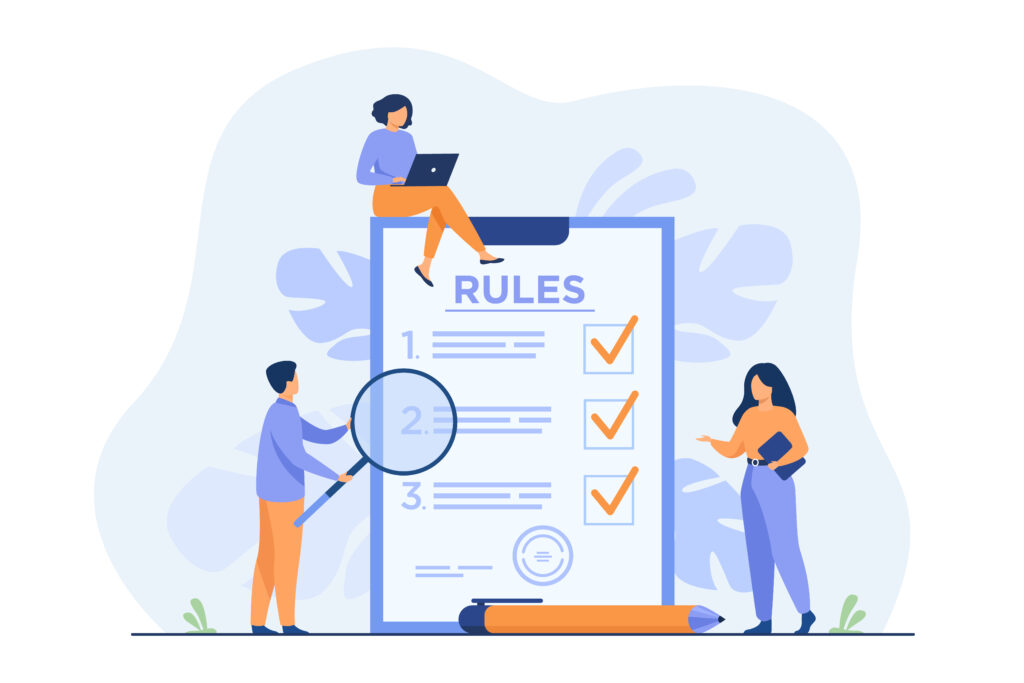
- Risk-Based Compliance: Determining vendor risk enables businesses to adopt a risk-based approach to compliance, focusing efforts where they are most needed.
- Proactive Management: By identifying potential compliance issues before they arise, businesses can proactively address them, avoiding regulatory scrutiny and penalties.
In conclusion, determining vendor risk is a critical component of modern business strategy, essential for ensuring operational resilience, financial stability, and maintaining a positive brand reputation. By investing in comprehensive risk assessment and management processes, businesses can navigate the complexities of vendor relationships with confidence, securing their place in a competitive market landscape.
QuickBoarding: Revolutionizing Vendor Risk Assessment with Advanced AI
In the landscape of vendor risk management, QuickBoarding emerges as a transformative solution, leveraging the power of artificial intelligence to redefine the efficiency, accuracy, and scope of vendor risk assessments and onboarding processes.
Overview of QuickBoarding’s AI Risk Engine
QuickBoarding’s advanced AI risk engine represents a leap forward in automated risk assessment. By integrating machine learning algorithms and natural language processing, this engine can swiftly analyze vast amounts of data from diverse sources to identify potential risks associated with vendors.
- Comprehensive Risk Profiles: The AI engine compiles comprehensive risk profiles for each vendor, assessing various risk domains such as financial stability, cybersecurity posture, compliance adherence, and operational reliability.
- Predictive Analytics: Utilizing predictive analytics, QuickBoarding forecasts potential future risks based on historical data and evolving market trends, enabling proactive risk management.
- Real-Time Monitoring: Continuous monitoring capabilities ensure that any changes in a vendor’s risk status are promptly identified, allowing for immediate response to mitigate potential impacts.
Simplifying Vendor Onboarding
QuickBoarding simplifies the vendor onboarding process, making it faster, more efficient, and more secure. Through automation and AI, the platform streamlines the collection, verification, and analysis of vendor information, reducing the time and resources required for onboarding.
- Automated Workflows: Customizable workflows automate the onboarding process, guiding vendors through each step and ensuring all necessary information and documentation are collected and verified.
- Integration with Existing Systems: QuickBoarding seamlessly integrates with existing procurement and vendor management systems, facilitating data exchange and enhancing process efficiency.
- Enhanced Compliance Checks: The platform automates compliance checks against regulatory requirements and industry standards, ensuring that all vendors meet the necessary criteria before they are onboarded.
Benefits of Using QuickBoarding
The adoption of QuickBoarding offers significant benefits for organizations seeking to optimize their vendor risk management and onboarding processes:
- Reduced Time and Cost: By automating risk assessment and onboarding, QuickBoarding significantly reduces the time and cost associated with these processes.
- Improved Accuracy and Insight: The AI-driven approach provides deeper insights into vendor risks, improving the accuracy of assessments and enabling more informed decision-making.
- Enhanced Operational Efficiency: Streamlining onboarding and integrating with existing systems enhance overall operational efficiency, allowing organizations to focus on core activities.
- Proactive Risk Management: Predictive analytics and real-time monitoring enable proactive management of vendor risks, reducing the likelihood of disruptions and negative impacts.
In conclusion, QuickBoarding, with its advanced AI risk engine, is at the forefront of revolutionizing vendor risk assessment and onboarding. By leveraging cutting-edge technology, organizations can achieve a more efficient, accurate, and proactive approach to managing vendor risks, ensuring the resilience and success of their business operations in an ever-evolving marketplace.
Conclusion
The landscape of vendor risk management is complex and multifaceted, requiring diligent attention and strategic foresight to navigate effectively. As businesses increasingly rely on a diverse network of vendors to support their operations, the importance of thorough vendor risk assessment and management cannot be overstated. It’s crucial for ensuring operational continuity, financial stability, and maintaining a positive reputation in the marketplace.
The integration of advanced technologies, such as AI and automated systems like QuickBoarding, has significantly transformed the vendor risk management process. These innovations offer unprecedented efficiency, accuracy, and predictive capabilities, enabling organizations to proactively identify and mitigate potential risks before they impact business operations.
Looking forward, the future of vendor risk management will likely be characterized by further technological advancements and the adoption of more holistic, integrated approaches to risk assessment. As the digital landscape continues to evolve, so too will the challenges and opportunities associated with vendor risk management. Organizations that embrace these innovations and adapt their strategies accordingly will be well-positioned to thrive in an increasingly interconnected and dynamic business environment.
In essence, effective vendor risk management is not just about mitigating risks; it’s about creating a competitive advantage by ensuring the reliability, integrity, and resilience of the supply chain. By investing in advanced risk assessment tools and fostering strong, transparent relationships with vendors, businesses can secure their operations against disruptions, safeguard their assets, and support sustainable growth in the years to come.
FAQs
1. What is vendor risk management, and why is it important?
Vendor risk management is the process of identifying, assessing, and mitigating the risks associated with using external vendors. It’s important because it helps ensure the stability and reliability of the supply chain, protects financial and reputational assets, and complies with regulatory requirements.
2. How does AI enhance vendor risk assessment processes?
AI enhances vendor risk assessment by providing advanced data analysis, predictive analytics, and real-time monitoring capabilities. This allows for more accurate risk assessments, early detection of potential issues, and proactive risk management.
3. Can automated tools fully replace manual vendor risk assessments?
While automated tools significantly enhance efficiency and accuracy, they complement rather than fully replace manual assessments. Human oversight is still necessary for interpreting complex situations, making strategic decisions, and managing relationships.
4. How often should vendor risk assessments be conducted?
Vendor risk assessments should be conducted regularly, with the frequency depending on the nature of the vendor relationship, the level of risk involved, and changes in the operational or regulatory environment. At a minimum, annual reassessments are recommended, with more frequent reviews for high-risk vendors.
5. What are the key features of QuickBoarding’s AI risk engine?
QuickBoarding’s AI risk engine features comprehensive risk profiling, predictive analytics, real-time monitoring, automated compliance checks, and seamless integration with existing systems. These capabilities streamline the risk assessment and vendor onboarding processes, enhancing efficiency and accuracy.
